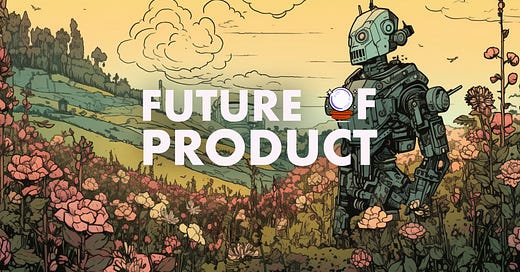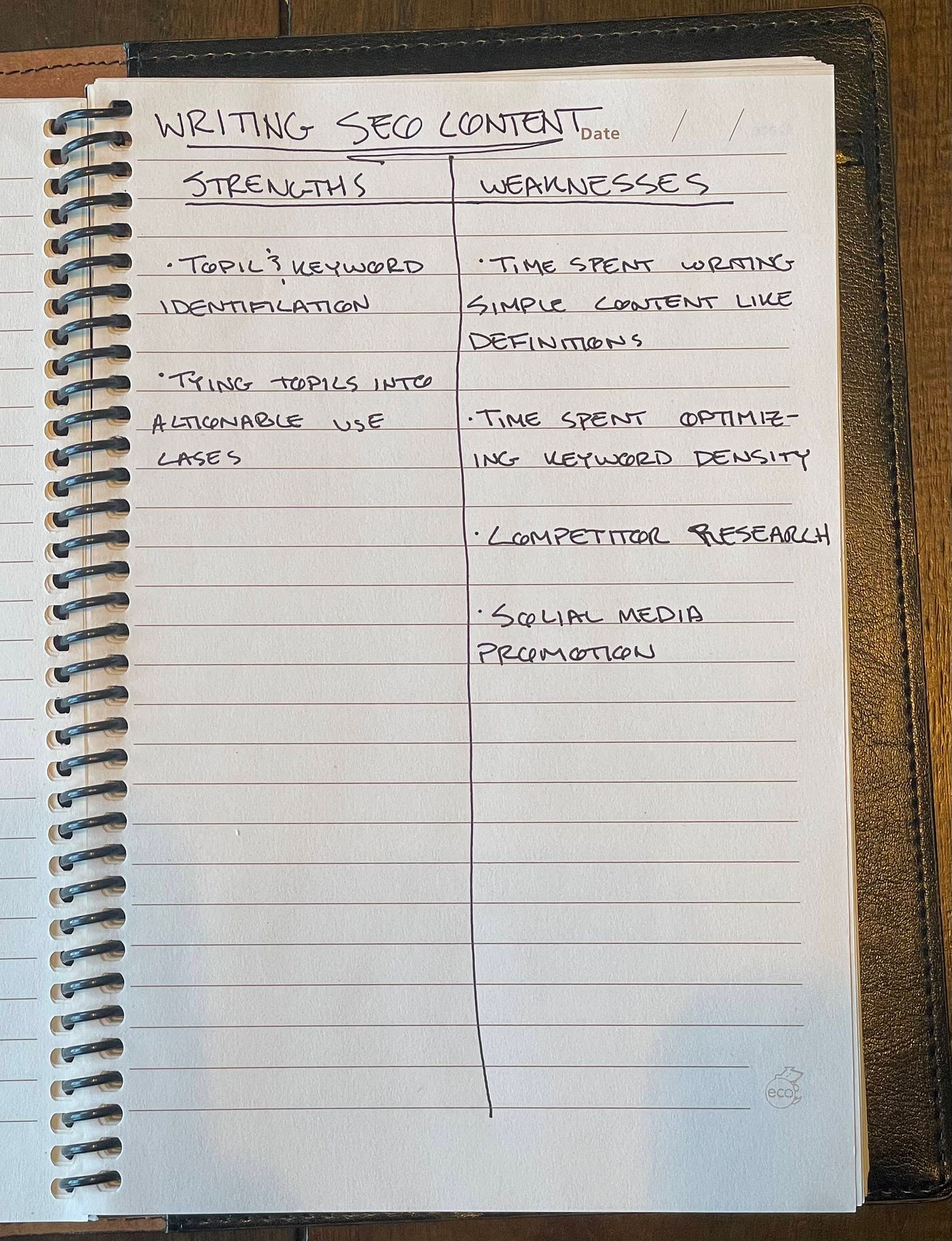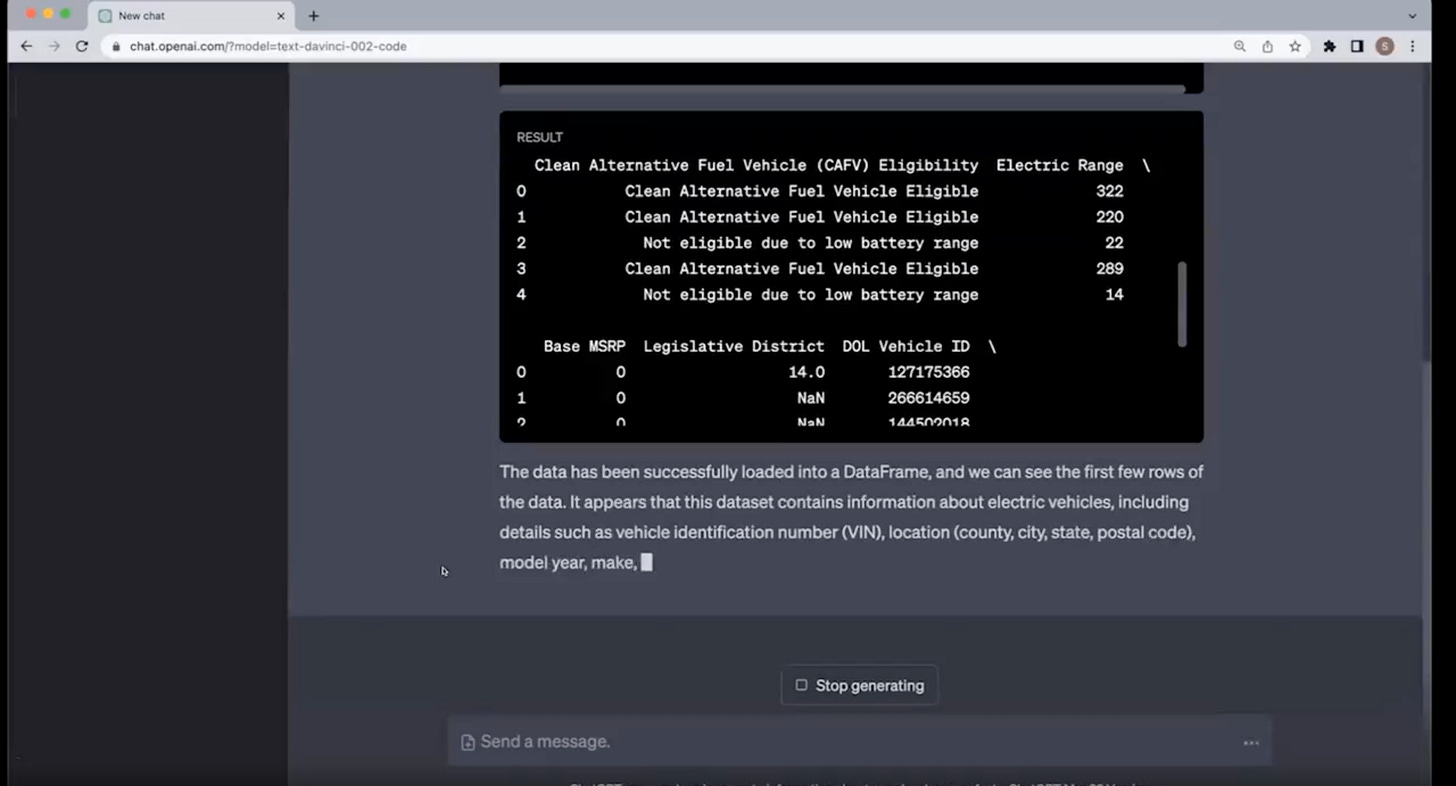Use AI to become superhuman
"Any sufficiently advanced technology is indistinguishable from magic." - Arthur C. Clarke
If you enjoy this edition of Future of Product, please subscribe, leave a like, and share it with your people!
TL;DR
Can we use AI to become superhuman? Augment your skills with this simple framework.
In the news: an AI pioneer leaves Google, the AI political campaign is here, IBM is slashing back office jobs in favor of AI tools.
Explore AI-powered tools like Unwrap, Delibr AI, and Cinnamon to boost efficiency and productivity in various aspects of your work.
As always, fun stuff’s at the bottom.
Become more than human...
Last week we talked about how AI tools can be used to bolster our humanity and make us more empathetic. This week, we’re changing tracks slightly to take a look at how product makers can best use AI tools to transcend their existing skillsets and level up. In this week’s podcast, Matt Kasner (head of product @ PlayerZero) and I discussed what it will take to avoid being replaced by AI - and reached the conclusion that in order to make yourself irreplaceable, you have to see yourself as an ever-evolving project (click here to listen to the full podcast):
"Are you consistently disrupting? Are you in that mindset of disrupting yourself to stay ahead? And I like to see myself as this project that will always be a project, and with technology it's more important than ever to be constantly redefining and innovating on the way that I go about my job, and the way I think about problems, and AI is a way to kind of help feed into that."
What Matt’s getting at here is that for high-level roles like product management, there’s no line between human and machine - only a set of jobs to be done. Therefore, whatever combination of technology and human effort completes those jobs at the lowest possible cost, and the highest possible quality, will win out in the end. In this paradigm, it’s up to you to invent and constantly reinvent a playbook for delivering value.
In the pod, Matt introduces a fantastic framework for augmenting your skills and becoming a driving force for AI adoption in your organization. It starts with vulnerability... before you can optimize, you need to know what you’re optimizing, and that requires looking at yourself with objectivity to identify your strengths and weaknesses.
Actionably, I recommend starting with a blank piece of paper and drawing a line down the middle of it. Label the piece of paper with one of your most common ‘jobs to be done’. On the left side, list out your strengths with regard to the job, and on the right side list out your weaknesses. You’ll end up with something that looks like this:
Now that I’ve taken stock of my strengths and weaknesses when it comes to creating SEO content, I can begin creating a framework for optimizing my time spent on this particular task. I know that topic & keyword identification and making topics actionable are strengths of mine, so for now, I don’t need to waste any time trying to optimize them. Instead, I’ll start by looking into tools that can help augment my weaknesses. Let’s start with the first weakness I identified: time spent writing simple content.
I know off the top of my head that there are a ton of tools for generating simple written content, so I can combine this weakness with another one to find a tool that will fit my specific needs. In this case, I’m Googling: “copywriting AI tools that can create SEO-optimized content”. Following this process helped me find the AI SEO-writing tool Byword, which not only writes high-quality long-form content, but also optimizes keyword density based upon the keywords/titles provided to it. With two weaknesses down, I simply repeat the process for my remaining weaknesses... and boom, I have a list of tools to try out that will actually make me more efficient, as well as pre-established expectations of my own performance with which to judge their effectiveness.
All you have to do to ensure you’re bringing in tools that actually move the needle is follow this process to a t. Simply repeat this for each of the most important jobs in your role until you’ve accounted for 100% of your time spent working each week. This framework has been great for me as it eliminates the “ooh look, shiny cool thing” effect that AI tends to have and cuts straight to the elements of my workflow that actually need augmentation.
Here’s another example: say I’m a product lead for a small startup with 7 employees. In such a business, bandwidth is incredibly limited and it’s crucial to ensure that work is delegated according to each individual’s unique skills. All too often though, work is actually delegated according to convenience.
For example, let’s say I need to take some production data and find the insights in it that are relevant to how I’ll plan out our next feature. I’m not a data scientist by trade, and I don’t understand code. But... I have 4 engineers on my team, all of whom are capable of visualizing data. So, I grab the one with the least amount of work currently on their plate and ask them to make some visualizations for me. Now, they may be competent with visualizing data, but by handing off this task to someone who doesn’t have my particular skillset, I guarantee that the learnings I’m actually able to take from the analysis will be limited to those my engineer can produce. What I actually need is an AI tool that can think about the data from a product owner’s perspective, and produce insights in a language that I can understand - in other words, I need to create an extension of myself that has the skills I lack.
If I would have done a strengths and weaknesses analysis prior to handing this work off to my engineer, I could have found the following Chat GPT use case from Jason Calacanis:
The way I see it, AI is coming for the minutia first - the pieces of our work that we wish we didn’t have to do and that contribute to a feeling of drudgery and inefficiency in the workplace. Jerry Cuomo (IBM Fellow and CTO of automation @ IBM) put it this way:
“Automation powered by artificial intelligence is changing our working lives by increasingly freeing people to apply their talent and effort to high-value work. Enterprises still spend billions of hours each year on mundane repetitive work, and AI can remove this burden so their people can focus on things that really matter. We call it making time for brilliance. We can use AI to transform people into superhumans.”
That’s not to say that AI won’t replace entire roles, but that those roles will specifically be around the “back office” tasks that white collar workers spend so much time on when they could be spending time finding unique solutions and innovating. So, how can you make yourself superhuman with AI? Take it one step at a time... keep open tabs for each and every “weakness” you’ve identified that doesn’t yet have a solution. See yourself as an ongoing project, and never stop optimizing.
Some of my favorite pieces on the subject of how AI can make us superhuman:
How AI-powered automation is giving people superhuman abilities by Jerry Cuomo, for IBM
Getting back to the core of a Product Manager in the face of AI by Christine Itwaru, for Mind the Product
Superhuman artificial intelligence can improve human decision-making by increasing novelty by Minkyu Shin, Jin Kim, Bas van Opheusden, and Thomas L. Griffiths, for the National Academy of Sciences
3 AI-powered tools to turbocharge your efficiency, today
🍬 Unwrap
The product - Unwrap is a comprehensive feedback management platform that consolidates all your customer input in one place. It uses advanced analytics to provide insights like granular sentiment changes, automated feedback tagging, and pattern recognition. Plus, you can search for specific feedback patterns, set up anomaly alerts, and even email customers in bulk when their concerns have been addressed!
The use case - Unwrap is perfect for product managers who need to stay on top of customer feedback in order to prioritize features and improvements - especially for PMs at large companies with a ton of distributed feedback. By having all feedback in one place and receiving automated insights, product managers can save time, make data-driven decisions, and maintain excellent customer communication.
Stay tuned for my interview with Unwrap cofounder Ashwin Singhania, dropping next Tuesday!
🤖Delibr AI
The product - Delibr.ai is an intelligent tool designed to help product managers effortlessly create PRDs (project requirement documents) using AI. It simplifies the process by asking you a few questions about your requirement and then generating the document based on your input. Delibr.ai also offers readymade templates and can connect to your existing PRD database, effectively becoming your second 'product' brain.
The use case - for product managers who are tired of spending countless hours on creating clear and concise PRDs, Delibr.ai is a game-changer. It streamlines the process and ensures that complex ideas are communicated effectively, allowing product managers to focus on more strategic tasks and ultimately drive their product's success.
📚 Cinnamon
The product - Cinnamon is an AI-powered document reader that automates data extraction from unstructured documents such as invoices, financial statements, and more. It tackles the challenges faced by businesses when dealing with repetitive tasks and saves millions of hours spent on manual document reading and processing.
The use case - companies across industries can benefit from Cinnamon’s ability to efficiently extract information from both handwritten and typed documents. By automating these time-consuming processes, businesses can reduce costs, speed up operations, and allocate their resources to more strategic tasks, ultimately enhancing overall productivity and performance.
Meet your product monitoring co-pilot
PlayerZero co-pilot is a complete reinvention of product monitoring only possible today thanks to recent advancements in AI technology. Now, you and your team can monitor customer experiences and find the root causes of negative outcomes in real time without any technical knowledge at all. It’s the easiest way for product folks to answer the toughest questions in their products and quickly hand off actionable answers to their engineers without ever having to learn or interpret a single line of code.
Co-pilot speaks your language - simply ask it what’s breaking, where, and why, and in return you’ll see every customer experience from every angle, from the events and identities to the front end and back end issues causing the experiences. And with powerful connectors like Datadog, Sentry, Mixpanel and Amplitude - PlayerZero is the only platform that connects all the dots to show a complete picture of every single customer’s experience in your product. All you have to do is connect it with an API key, and co-pilot does the rest.
Learn more about PlayerZero co-pilot today and get your first month free!
Chronicles of the circuit circus
AI pioneer quits Google to warn humanity of the tech’s existential threat - Victoria Bisset for The Washington Post. The big pull quote:
“In an interview with the BBC, he said he does not believe that AI systems are yet as intelligent as humans. “But I think they soon may be,” he said. Hinton cited that risk in explaining his resignation from Google on Monday after 10 years at the tech giant. He said he wants to be able to talk freely about the risks posed by AI — but emphasized his belief that the company “has acted very responsibly.””
The AI political campaign is here - Donie O'Sullivan for CNN Politics. The big pull quote:
““Imagined realities and deceptive ads are nothing new in political campaigns. Lyndon B. Johnson’s 1964 presidential campaign brought forth the so-called “Daisy Girl” attack ad, which imagined a nuclear apocalypse were his opponent Barry Goldwater to win. But AI muddies the waters much further, said Farid.
“We enter this world where anything can be fake – any image, any audio, any video, any piece of text. Nothing has to be real,” he said “We have what’s called a liar’s dividend, which is anybody can deny reality.”
Farid pointed to the infamous release of the “Access Hollywood” tape in the final days of the 2016 presidential campaign, in which Trump bragged in graphic terms about being able to sexually assault women. The footage led to the rare occasion when Trump has apologized for his actions. But now, he said, Trump could more easily claim the audio was faked.”
IBM’s CEO expects A.I. to be so good at back office work that he plans to pause hiring humans for those jobs - Brody Ford for Fortune. The big pull quote:
“Hiring in back-office functions — such as human resources — will be suspended or slowed, Krishna said in an interview. These non-customer-facing roles amount to roughly 26,000 workers, Krishna said. “I could easily see 30% of that getting replaced by AI and automation over a five-year period.””
AI distractions
🤖 AI can make memes about AI
Try out this AI-powered meme generator and be sure to share anything especially funny that you’re able to create with me on socials.
🍕 Cheese, pepperoni, vegetable, and more secret things...
This video was created entirely by AI... enjoy.
🎙️ With writers on strike, can an AI chatbot be as funny as Stephen Colbert?
I’ll be honest, I don’t find the Late Show all that funny, so I personally think Chat GPT crushed it.
Signoff
Thanks for joining me on another Future of Product! I’ve been having a ton of fun making these and I’m grateful to have you along for the journey! If you haven't already, be sure to check out this week’s episode of the Future of Product Podcast, where I had an insightful conversation with my teammate Matt Kasner, head of product at PlayerZero. You can access the episode here.
Next week, I sit down with Ashwin Singhania, co-founder & CPO at unwrap.ai - an AI driven product that analyzes feedback from various customer feedback channels, giving companies the ability to see, understand, and respond to what customers are saying about them.
Can’t wait to see you next week!











